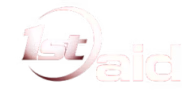Menu
Do You Know What to Do in a Real Emergency?

What would you do if someone fell and broke a bone? Or if they showed signs of a spinal injury or internal bleeding? These are critical, potentially life-saving situations — and the kind of emergencies covered in a certified first aid course.
But before signing up, many people have important questions:
- Do I have to perform mouth-to-mouth during CPR training?
- Can I choose to only do chest compressions?
- How many students are in a classroom?
- What does it take to become an OH&S-approved training provider in Alberta?
Let’s walk through the answers so you can feel informed and confident as you consider your training options.
💡 What First Aid Course Should I Register For?
This is one of the most frequently asked questions — and an important one.
If you want to learn how to respond to broken bones, spinal injuries, and internal bleeding, you should register for Intermediate First Aid (also known as Standard First Aid). It includes everything in Basic First Aid, plus advanced topics and hands-on skills that can make a real difference in an emergency.
Important tip:
If your workplace or school only requires Basic First Aid, an Intermediate First Aid certificate will still meet (and exceed) those requirements. However, the opposite is not true — a Basic First Aid certificate will not be accepted where Intermediate First Aid is required.
When in doubt, choose Intermediate First Aid.
🫁 Do I Have to Perform Mouth-to-Mouth on a Real Person?
No. CPR training in Alberta — and across Canada — is done using sanitized, professional CPR manikins.
Mouth-to-mouth on another person hasn’t been required in CPR training since the 1980s. For health, hygiene, and ethical reasons, this practice is no longer included.
❤️ Can I Just Do Chest Compressions During CPR?
Yes — in some cases.
If you’re trained and your workplace provides personal protective equipment (PPE) such as pocket masks or barrier devices, you’re expected to provide both chest compressions and ventilations. This is the most effective way to deliver CPR.
However, in real-world scenarios where you don’t have PPE or you’re not comfortable providing ventilations, compression-only CPR is still better than doing nothing. Your instructor will go over both techniques during the course and help you feel comfortable with whichever method applies.
👥 How Many Students Are in a First Aid Class?
Class sizes depend on the certifying organization and the number of instructors present. Here’s a general breakdown:
- Canadian Red Cross: Maximum 18 students per instructor
- St. Mark James Training: Typically 18–20 students per instructor
- Lifesaving Society: Maximum 12 students per instructor (more allowed based on instructor experience)
Note:
Additional instructors may be added to accommodate larger groups, ensuring hands-on learning and personal feedback are never compromised.
✅ What Does It Take to Be an OH&S-Approved First Aid Provider in Alberta?
Becoming an approved provider involves meeting strict criteria set by Alberta Occupational Health & Safety (OH&S). Organizations must:
- Deliver approved course content
- Train instructors to provincial standards
- Provide appropriate facilities, equipment, and evaluations
- Undergo formal approval by Alberta OH&S
This ensures every course meets the legal and professional standards for workplace safety training in Alberta.
Want to learn more about the approval process? Click here to learn more.
Ready to Learn Life-Saving Skills?
Whether it’s for your job, your school program, or simply peace of mind, first aid training gives you the knowledge and confidence to act when it matters most.
Enroll with Lethbridge First Aid and learn from experienced instructors, OH&S-approved courses, and real-world training designed to prepare you for anything.
📍 Lethbridge First Aid
Unit 207 – 517 4 Ave S, Lethbridge, AB T1J 0N4
📞 Phone: +1-403-244-1043
✉️ Email: [email protected]
🌐 Website: www.lethbridgefirstaid.ca
